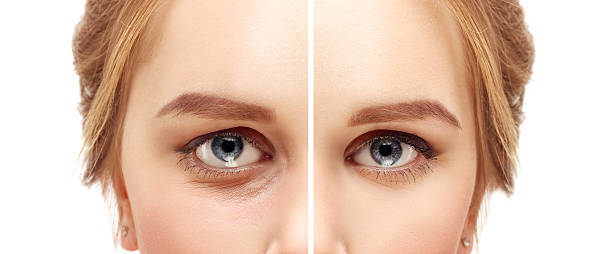Introduction to Upper Blepharoplasty
Upper blepharoplasty in Abu Dhabi is a popular cosmetic procedure designed to improve the appearance of the upper eyelids. It involves the removal of excess skin and sometimes fat to create a more youthful and alert appearance. In Abu Dhabi, this surgery has gained significant traction as people seek to enhance their looks or address functional issues. But like all surgeries, it comes with risks and complications that patients should understand before making a decision.
Common Reasons for Upper Blepharoplasty
There are several reasons why someone might consider upper blepharoplasty:
- Aesthetic Enhancement: As we age, our eyelids can start to droop, giving a tired or aged appearance. Upper blepharoplasty can help restore a more youthful look.
- Functional Improvement: In some cases, excess skin on the upper eyelid can impair vision. Surgery can correct this issue, improving both appearance and functionality.
- Age-related Changes: Over time, the skin loses its elasticity, leading to sagging. This procedure can address these age-related changes.
Understanding the Risks of Upper Blepharoplasty
Although upper blepharoplasty is generally safe, patients should be aware of the risks involved. These risks can be broadly categorized into surgical risks, specific complications, and recovery risks.
General Surgical Risks
All surgeries carry a certain level of risk. Some of the general risks associated with upper blepharoplasty include:
- Infection and Bleeding: As with any surgery, there's a risk of infection at the surgical site and potential bleeding during or after the procedure.
- Anesthesia Complications: General or local anesthesia may cause adverse reactions in some patients.
- Scarring and Wound Healing Issues: While blepharoplasty typically leaves minimal scarring, there's always a risk of wound healing complications or noticeable scars.
Specific Complications of Upper Blepharoplasty
Certain complications are more specific to upper blepharoplasty, such as:
- Eyelid Asymmetry: If not performed correctly, the surgery can lead to uneven or asymmetrical eyelids.
- Vision Problems: In rare cases, the procedure may affect vision, leading to blurriness or double vision.
- Eyelid Retraction: This occurs when the eyelid pulls back too much, leading to an unnatural appearance and potential discomfort.
Recovery Risks and Challenges
Post-operative recovery also carries its own set of risks and challenges. Patients may experience:
- Swelling and Bruising: These are common after surgery but should subside within a few weeks.
- Dry Eyes and Irritation: The eyes may feel dry or irritated during the recovery period.
- Sensitivity to Light: Some patients might experience increased sensitivity to light, making it uncomfortable to go outside.
Reducing the Risks of Upper Blepharoplasty
To minimize risks, patients should take certain precautions. Here are some tips:
- Selecting a Qualified Surgeon: Choosing an experienced and reputable surgeon is crucial to reduce the likelihood of complications.
- Pre-operative Preparations: Follow all pre-surgery instructions, such as fasting and medication adjustments.
- Post-operative Care: Proper post-operative care, including rest and following medical advice, helps speed up recovery and prevent complications.
Post-operative Care Tips
After the procedure, following these post-operative care tips can reduce complications and ensure a smooth recovery:
- Following Medical Advice: Always follow your surgeon's post-operative instructions to ensure proper healing.
- Proper Hygiene and Care: Keep the surgical site clean and avoid touching or rubbing the area.
- Managing Pain and Discomfort: Use prescribed pain relievers and cold compresses to manage pain and swelling.
Patient Considerations for Upper Blepharoplasty
Before undergoing upper blepharoplasty, patients should consider several factors:
- Is the Procedure Right for You?: Understand your reasons for seeking the surgery and whether it aligns with your goals.
- Alternative Treatments: Explore non-surgical alternatives, such as Botox or fillers, which might be suitable in some cases.
- Setting Realistic Expectations: Have realistic expectations about the outcomes and understand that results vary from person to person.
Choosing a Surgeon in Abu Dhabi
Choosing the right surgeon is crucial for a successful outcome. Here are some tips for selecting a surgeon in Abu Dhabi:
- Researching Surgeons: Look for surgeons with experience and a good track record in performing upper blepharoplasty.
- Checking Credentials: Ensure the surgeon is certified and has the necessary qualifications.
- Reading Reviews and Testimonials: Reading reviews from previous patients can provide insights into the surgeon's skills and patient satisfaction.
Conclusion
Upper blepharoplasty can be a transformative procedure, but it's essential to understand the risks and complications involved. Patients in Abu Dhabi should weigh the benefits against the potential risks and ensure they are working with a qualified surgeon. Proper pre-operative and post-operative care can significantly reduce the chances of complications and lead to a smoother recovery. Ultimately, making an informed decision and following medical advice are key to achieving the desired results.
FAQs
- What is the typical recovery time for upper blepharoplasty?
- Recovery time varies, but most patients can return to normal activities within 7-10 days. Full recovery, including resolution of swelling and bruising, may take a few weeks.
- Can upper blepharoplasty affect my vision?
- In rare cases, upper blepharoplasty can cause temporary vision issues like blurriness or double vision. Serious complications affecting vision are extremely rare.
- How long do the results of upper blepharoplasty last?
- The results of upper blepharoplasty are generally long-lasting, with many patients enjoying the benefits for 10-15 years or more.
- What should I look for in a blepharoplasty surgeon in Abu Dhabi?
- Look for a surgeon with experience, proper certification, a good track record, and positive reviews from previous patients. It's also helpful to have a consultation to discuss your goals and concerns.
- Are there non-surgical alternatives to upper blepharoplasty?
- Yes, non-surgical alternatives like Botox, dermal fillers, or laser treatments can help reduce the appearance of droopy eyelids. However, these methods are generally temporary and may not provide the same results as surgery.





Comments